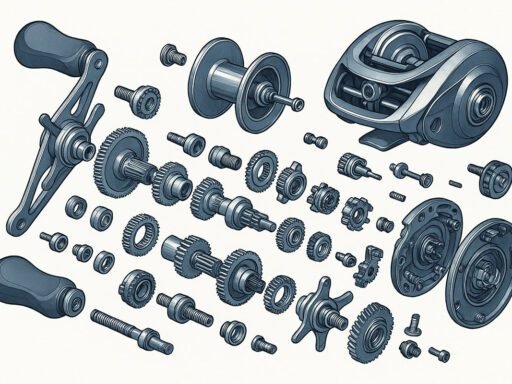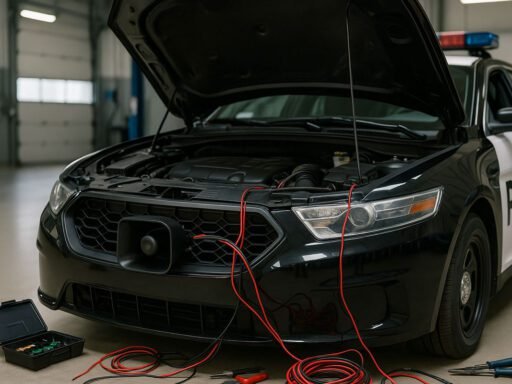The sound of the crash fades. Your hands tighten on the wheel. Adrenaline surges. Whether you’re a long-haul driver or making short delivery runs, no one is ever fully prepared for the chaos that follows a truck accident. It’s not just about the collision—it’s about what comes next. Decisions made in the minutes and hours after can affect your safety, your legal standing, and your financial future.
This guide is for truck drivers who find themselves in that moment after impact. It’ll help you take action without panicking. And it walks you through each step, from the roadside to the recovery process.
Let’s get into it.
Check Yourself and Others First
The first few seconds after a crash should always focus on safety. Start with yourself. Take a breath and assess for injuries. Can you move? Are you bleeding? Pain may not always show up right away, but noticeable trauma needs immediate attention.
Once you know you’re okay—or if your injuries are minor—check on others if it’s safe to do so. Stay inside your vehicle if stepping out puts you at risk.
If another driver or passenger appears hurt, call emergency services without delay. Avoid physically moving anyone unless there’s a fire or danger of explosion. Medical professionals should handle that.
Call a Heavy-Duty Towing Service Immediately
Once you’ve checked for injuries and called emergency responders, your next step is to secure the scene. For commercial truck drivers, this means getting a professional towing service on the line fast.
Not all towing companies can handle big rigs, trailers, or buses. Calling a standard tow truck can waste time and make things worse. That’s why it’s important to work with someone who specializes in heavy-duty towing, like Geyers Towing & Recovery. Their team has over two decades of experience in recovering large commercial vehicles, using equipment designed specifically for the job. They operate around the clock and can handle wrecks, rollovers, or jackknifed trucks quickly and safely.
Choosing the right towing service reduces further damage, shortens downtime, and helps you clear the road efficiently. If you’re not already carrying a number like Geyers in your contact list, do it now—before you need it.
Secure the Scene and Set Up Warning Signals
As you wait for help, you need to protect yourself and others from additional accidents. If you’re able to exit your vehicle safely, set out warning devices like cones, triangles, or flares. Federal regulations require that truck drivers place these within ten minutes of stopping, especially if the vehicle is disabled on the road.
Start by placing one about 10 feet behind your truck, another at 100 feet, and the last at 200 feet, all facing traffic. If you’re on a curve or hill, adjust placements so they’re clearly visible to approaching vehicles.
Take Photos
While waiting, use your phone to capture the details around you. Photograph the damage to your truck and any other vehicles involved. Snap images of road signs, intersections, skid marks, debris, and weather conditions.
Don’t forget close-ups of license plates, tire positions, and visible injuries. If you have a dashcam, ensure that the footage is saved and backed up. The more information you collect now, the stronger your position will be when dealing with insurance or legal claims later.
Exchange Information the Right Way
Once things begin to settle, speak with the other driver or drivers. Keep your tone calm and your words simple. Exchange essential information—names, phone numbers, license numbers, insurance details, and vehicle plate numbers.
Don’t discuss fault or get pulled into arguments. What seems clear now may not hold up under investigation. Let the facts speak for themselves.
Cooperate With Law Enforcement (But be Careful)
When police arrive at the scene, they take control of the situation. They’ll ask questions, direct traffic, and begin compiling a report. Cooperate fully, but speak with purpose. Stick to the facts—what you saw, what you did, and where you were. Don’t guess, assume, or speculate. If you’re unsure about something, it’s okay to say so.
It’s also important to avoid admitting fault. Even saying something as casual as “I’m sorry” can be misinterpreted later. Just answer questions clearly and calmly. Ask for the report number so you can follow up and request a copy.
Notify Your Company and File an Internal Report
As soon as the situation is stable and you’re safe, call your dispatcher, safety manager, or supervisor. They’ll need to know what happened and how serious it is. Be straightforward. Tell them where the accident took place, who was involved, and whether emergency services responded.
Most companies require you to file an internal incident report as soon as possible. These reports help the company investigate the event, file insurance claims, and meet regulatory requirements. If you’re an owner-operator, this step shifts to contacting your own insurance company directly and providing all the facts and documentation.
Get a Medical Check – Even if You Feel Fine
You may feel fine after the crash. Maybe you’ve got no obvious injuries and you just want to get home. But the body doesn’t always react immediately. It’s common for truck drivers to experience symptoms hours or even days later—headaches, dizziness, pain, or trouble sleeping.
Getting a medical evaluation right after an accident can catch injuries early. It also creates a clear record that ties those injuries directly to the incident. If you wait, insurance companies may argue that your injuries weren’t related to the crash.
Handle Insurance and Liability Carefully
After an accident, the calls start coming. Insurance adjusters will require details, timelines, and statements. If the other party’s insurance contacts you, be cautious. You’re not required to give a recorded statement on the spot, and doing so can create problems if you misspeak or forget details.
Focus on providing truthful, consistent information—only after you’ve reviewed your notes and talked with your company.
Focus on Recovery
Accidents shake you up, physically and mentally. If you’ve been hurt, follow every step of your treatment plan and track your recovery. Getting back behind the wheel too soon may not only worsen your condition, it could also impact your insurance or employer support.
Also, stay in touch with your insurer or legal advisor until the matter is resolved. Don’t ignore letters, deadlines, or court dates. Even if you weren’t at fault, staying engaged helps protect your record and your reputation.
The time after a truck accident is more than just a cleanup—it can be a turning point. What you do in the hours and days that follow can protect your safety, your job, and your peace of mind. It starts with taking the right steps at the scene and continues through recovery, reporting, and resolution. Every mile on the road carries risk, but when the unexpected happens, knowing how to respond puts you in control. Stay calm, be prepared, and focus on the journey ahead.






